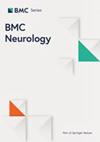Amplify Gait to Improve Locomotor Engagement in Spinal Cord Injury (AGILE SCI) trial: study protocol for an assessor blinded randomized controlled trial
IF 2.2
3区 医学
Q3 CLINICAL NEUROLOGY
引用次数: 0
Abstract
Among ambulatory people with incomplete spinal cord injury (iSCI), balance deficits are a primary factor limiting participation in walking activities. There is broad recognition that effective interventions are needed to enhance walking balance following iSCI. Interventions that amplify self-generated movements (e.g., error augmentation) can accelerate motor learning by intensifying sensorimotor feedback and facilitating exploration of motor control strategies. These features may be beneficial for retraining walking balance after iSCI. We have developed a cable-driven robot that creates a movement amplification environment during treadmill walking. The robot applies a continuous, laterally-directed, force to the pelvis that is proportional in magnitude to real-time lateral velocity. Our purpose is to investigate the effects of locomotor training in this movement amplification environment on walking balance. We hypothesize that for ambulatory people with iSCI, locomotor training in a movement amplification environment will be more effective for improving walking balance and participation in walking activities than locomotor training in a natural environment (no applied external forces). We are conducting a two-arm parallel-assignment intervention. We will enroll 36 ambulatory participants with chronic iSCI. Participants will be randomized into either a control or experimental group. Each group will receive 20 locomotor training sessions. Training will be performed in either a traditional treadmill environment (control) or in a movement amplification environment (experimental). We will assess changes using measures that span the International Classification of Functioning, Disability and Health (ICF) framework including 1) clinical outcome measures of gait, balance, and quality of life, 2) biomechanical assessments of walking balance, and 3) participation in walking activities quantified by number of steps taken per day. Training walking balance in people with iSCI by amplifying the individual’s own movement during walking is a radical departure from current practice and may result in new strategies for addressing balance impairments. Knowledge gained from this study will expand our understanding of how people with iSCI improve walking balance and how an intervention targeting walking balance affects participation in walking activities. Successful outcomes could motivate development of clinically feasible tools to replicate the movement amplification environment within clinical settings. NCT04340063.增强步态以改善脊髓损伤患者的运动参与(AGILE SCI)试验:评估者盲法随机对照试验的研究方案
在行动不便的不完全脊髓损伤(iSCI)患者中,平衡障碍是限制其参与行走活动的主要因素。人们普遍认识到,需要采取有效的干预措施来增强不完全脊髓损伤患者的行走平衡能力。放大自我产生动作的干预措施(如误差增强)可通过强化感觉运动反馈和促进对运动控制策略的探索来加速运动学习。这些特点可能有利于在 iSCI 后重新训练行走平衡。我们开发了一种缆索驱动机器人,可在跑步机行走过程中创造运动放大环境。该机器人向骨盆施加持续的、横向定向的力,其大小与实时横向速度成正比。我们的目的是研究在这种运动放大环境中进行运动训练对行走平衡的影响。我们假设,对于行动不便的 iSCI 患者来说,在运动放大环境中进行运动训练比在自然环境(无外力作用)中进行运动训练更能有效改善行走平衡和参与行走活动。我们正在进行一项双臂平行分配干预。我们将招募 36 名慢性 iSCI 患者。参与者将被随机分为对照组或实验组。每组将接受 20 次运动训练。训练将在传统的跑步机环境(对照组)或运动放大环境(实验组)中进行。我们将采用国际功能、残疾和健康分类(ICF)框架内的测量方法来评估患者的变化,这些方法包括:1)步态、平衡和生活质量的临床结果测量;2)步行平衡的生物力学评估;3)以每天行走步数量化的步行活动参与情况。通过在行走过程中放大患者自身的运动来训练 iSCI 患者的行走平衡能力,这与目前的做法大相径庭,可能会产生解决平衡障碍的新策略。从这项研究中获得的知识将拓展我们对 iSCI 患者如何改善行走平衡以及针对行走平衡的干预措施如何影响行走活动参与度的认识。成功的结果将推动临床可行工具的开发,从而在临床环境中复制运动放大环境。NCT04340063。
本文章由计算机程序翻译,如有差异,请以英文原文为准。
求助全文
约1分钟内获得全文
求助全文
来源期刊

BMC Neurology
医学-临床神经学
CiteScore
4.20
自引率
0.00%
发文量
428
审稿时长
3-8 weeks
期刊介绍:
BMC Neurology is an open access, peer-reviewed journal that considers articles on all aspects of the prevention, diagnosis and management of neurological disorders, as well as related molecular genetics, pathophysiology, and epidemiology.
文献相关原料
| 公司名称 | 产品信息 | 采购帮参考价格 |
|---|
 求助内容:
求助内容: 应助结果提醒方式:
应助结果提醒方式:


